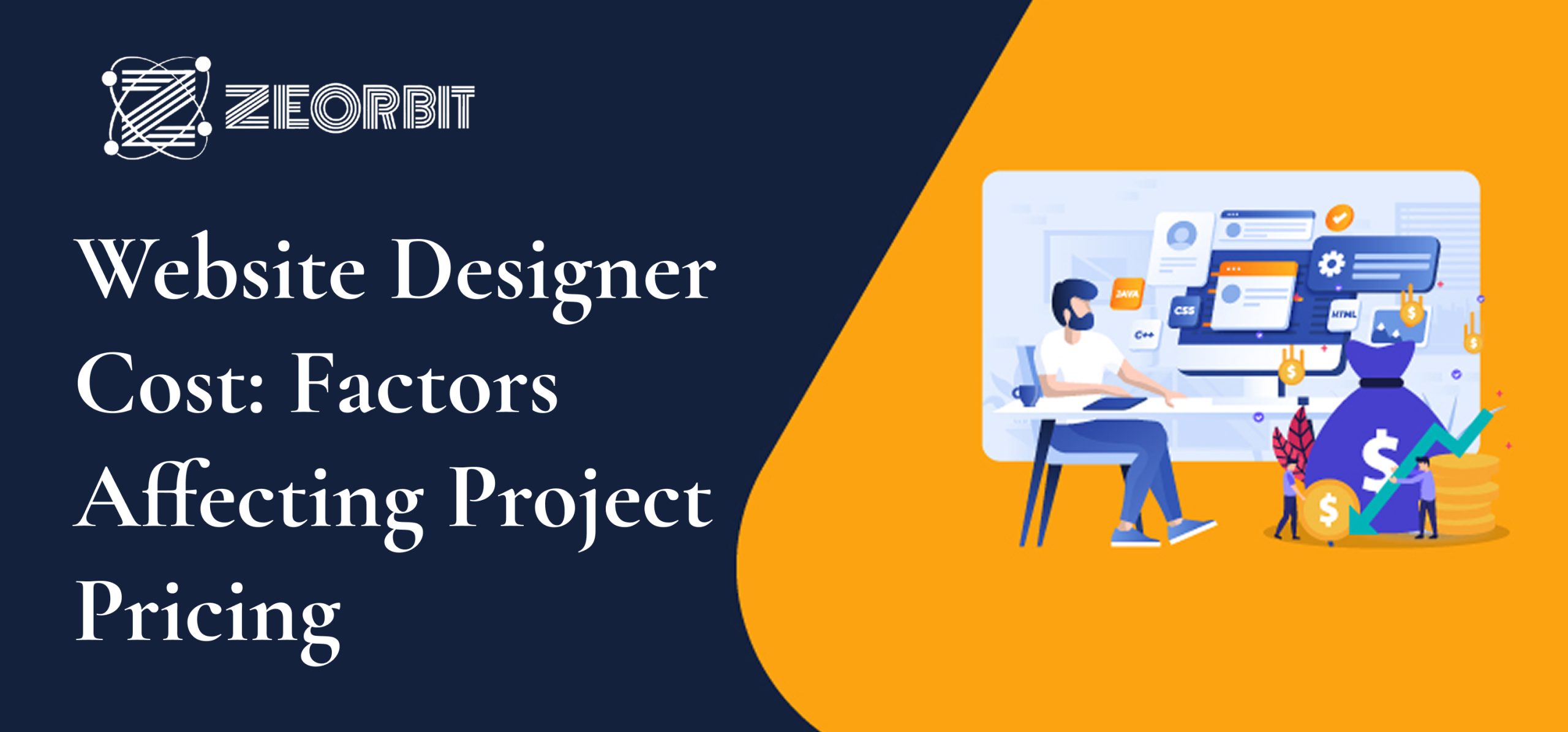Website Designer Cost: Factors Affecting Project Pricing
Website Designer Cost: Factors Affecting Project Pricing (2024 Update)
Creating a website is a crucial step for any business or individual looking to establish an online presence. One of the first questions that usually arises is: “How much does it cost to hire a website designer?” The answer, unfortunately, isn’t a simple number. Website design costs vary significantly based on a multitude of factors. This article will break down those factors to help you understand what influences website designer pricing in 2024.
Understanding the Scope of Website Design
Before diving into pricing, it’s important to understand what website design actually entails. It’s much more than just making a website look pretty. A good website designer considers:
- User Experience (UX): How easily visitors can navigate and interact with the site.
- User Interface (UI): The visual elements that make the site aesthetically pleasing and intuitive.
- Mobile Responsiveness: Ensuring the website looks and functions flawlessly on all devices (desktops, tablets, smartphones).
- Branding Consistency: Maintaining a consistent brand identity throughout the site.
- Search Engine Optimization (SEO): Designing the site with SEO best practices in mind to improve its visibility in search results.
- Accessibility: Making the website usable for people with disabilities.
- Content Integration: Organizing and presenting content effectively.
- Call to Actions (CTAs): Strategically placed elements that encourage visitors to take desired actions (e.g., contact you, make a purchase).
A designer’s work is often the foundation upon which a developer will build the working website.
Key Factors Influencing Website Design Costs
Several factors will influence the overall cost of your website design project. Let’s explore the most significant ones:
1. Project Complexity and Size
The complexity and size of your website are the most significant drivers of cost.
- Number of Pages: A simple, five-page website will be significantly less expensive than a 50-page e-commerce platform.
- Features and Functionality: Adding complex features like:
- E-commerce capabilities (shopping cart, payment gateway integration)
- Membership areas with user logins
- Interactive maps
- Booking systems
- Custom forms with advanced validation
- Database integration
- Animations and interactive elements
will all increase the design and development time, and therefore, the cost.
- Content Requirements: If the designer is also responsible for creating or sourcing content (writing copy, taking photographs, creating videos), the cost will be higher.
- Custom Design vs. Template: Using a pre-designed template is significantly cheaper than creating a custom design from scratch.
2. Designer’s Experience and Expertise
Like any profession, experience and expertise command higher prices. A seasoned designer with a proven track record will likely charge more than a junior designer or freelancer.
- Years of Experience: Designers with more years of experience typically have a deeper understanding of design principles, best practices, and industry trends.
- Portfolio Quality: A strong portfolio showcasing successful projects demonstrates the designer’s capabilities and expertise. Look for designs that are both visually appealing and effective in achieving business goals.
- Specialization: Designers specializing in a specific niche (e.g., e-commerce, healthcare, non-profit) may charge more due to their specialized knowledge and experience in that area.
- Client Testimonials and Reviews: Positive testimonials and reviews from previous clients indicate the designer’s reliability, professionalism, and ability to deliver results.
3. Design Type: Custom vs. Template
Choosing between a custom design and a template significantly impacts the cost.
- Custom Design:
- Pros: Unique branding, tailored to your specific needs, greater flexibility, stands out from the competition.
- Cons: More expensive, longer development time.
- Template Design:
- Pros: More affordable, faster turnaround time, readily available.
- Cons: Limited customization, may look generic, potential for similar websites existing.
Think about: A custom design allows for a truly unique brand experience, while a template offers a cost-effective solution for businesses with smaller budgets. Consider your long-term goals and branding strategy when making this decision.
4. Geographic Location
Geographic location plays a role in website design costs due to varying cost of living and market rates.
- Agency vs. Freelancer: Agencies generally have higher overhead costs than freelancers, which are reflected in their pricing.
- Location of Designer: Designers in major metropolitan areas (e.g., New York, San Francisco) often charge more than those in smaller cities or rural areas.
- Offshore Outsourcing: Hiring designers from countries with lower labor costs can significantly reduce expenses, but be aware of potential communication barriers and time zone differences.
5. Ongoing Maintenance and Support
Website design isn’t a one-time expense. Ongoing maintenance and support are crucial to keep your website secure, up-to-date, and functioning properly.
- Maintenance Packages: Many designers offer maintenance packages that include regular updates, security monitoring, and technical support.
- Content Updates: If you need regular content updates (e.g., blog posts, product updates), factor in the cost of these services.
- Technical Support: Consider the cost of technical support for troubleshooting issues and resolving any website problems that may arise.
Don’t underestimate: Website maintenance is essential for security, performance, and user experience. Failing to maintain your website can lead to security vulnerabilities, broken links, and a poor user experience, which can damage your brand reputation.
6. Revisions and Feedback Rounds
The number of revisions and feedback rounds included in the project scope can impact the overall cost.
- Defined Scope: Clearly define the project scope and the number of revisions allowed to avoid scope creep and unexpected costs.
- Clear Communication: Provide clear and concise feedback to the designer to minimize the number of revisions required.
- Change Orders: Be prepared for potential change orders if you request significant changes outside the original scope.
Tip: Communicate your vision and expectations clearly from the outset to minimize revisions and ensure a smooth design process.
Different Website Design Pricing Models
Website designers typically use one of the following pricing models:
- Hourly Rate: The designer charges an hourly rate for their time. This model is suitable for projects with unclear scope or ongoing work. Range: $50 – $200+ per hour
- Fixed Price: The designer provides a fixed price quote for the entire project. This model is suitable for projects with a well-defined scope. Range: $1,000 – $10,000+ depending on complexity.
- Value-Based Pricing: The designer charges based on the perceived value of the project to the client. This model is suitable for projects that generate significant revenue or cost savings. Price Varies Greatly
- Monthly Retainer: The designer provides ongoing services for a fixed monthly fee. This model is suitable for projects that require continuous maintenance, updates, or support. Range: $500 – $5,000+ per month.
Examples of Website Design Costs
To give you a better understanding of potential costs, here are some examples:
- Simple Brochure Website (5-10 pages, template-based): $500 – $2,000
- Small Business Website (10-20 pages, custom design): $2,000 – $7,000
- E-commerce Website (custom design, shopping cart, payment gateway integration): $5,000 – $20,000+
- Complex Web Application (database integration, user accounts, advanced features): $10,000 – $50,000+
Important Note: These are just estimates, and the actual cost may vary depending on the specific factors discussed above.
Questions to Ask a Website Designer Before Hiring
Before hiring a website designer, ask these important questions:
- Can I see examples of your work (portfolio)?
- What is your design process?
- What is included in your price?
- How many revisions are included?
- What are your payment terms?
- What is your timeline for completion?
- Do you offer ongoing maintenance and support?
- Who owns the website design files?
- Do you have experience with websites similar to mine?
- Can you provide references from previous clients?
Getting the Best Value for Your Website Design Investment
- Define Your Goals: Clearly define your website goals and objectives before contacting designers.
- Set a Budget: Determine a realistic budget for your website design project.
- Do Your Research: Research different designers and compare their portfolios, pricing, and experience.
- Read Reviews and Testimonials: Check online reviews and testimonials to get an idea of the designer’s reputation and quality of work.
- Get Multiple Quotes: Get quotes from several designers to compare pricing and services.
- Negotiate: Don’t be afraid to negotiate the price and terms of the contract.
- Read the Contract Carefully: Thoroughly review the contract before signing to ensure you understand the scope of work, payment terms, and ownership of the design files.
Conclusion
Understanding the factors that influence website design costs is crucial for making informed decisions and getting the best value for your investment. By carefully planning your project, researching different designers, and negotiating the terms of the contract, you can create a website that meets your needs and achieves your business goals without breaking the bank. Remember to prioritize quality, functionality, and user experience to ensure your website is a valuable asset for your business.


